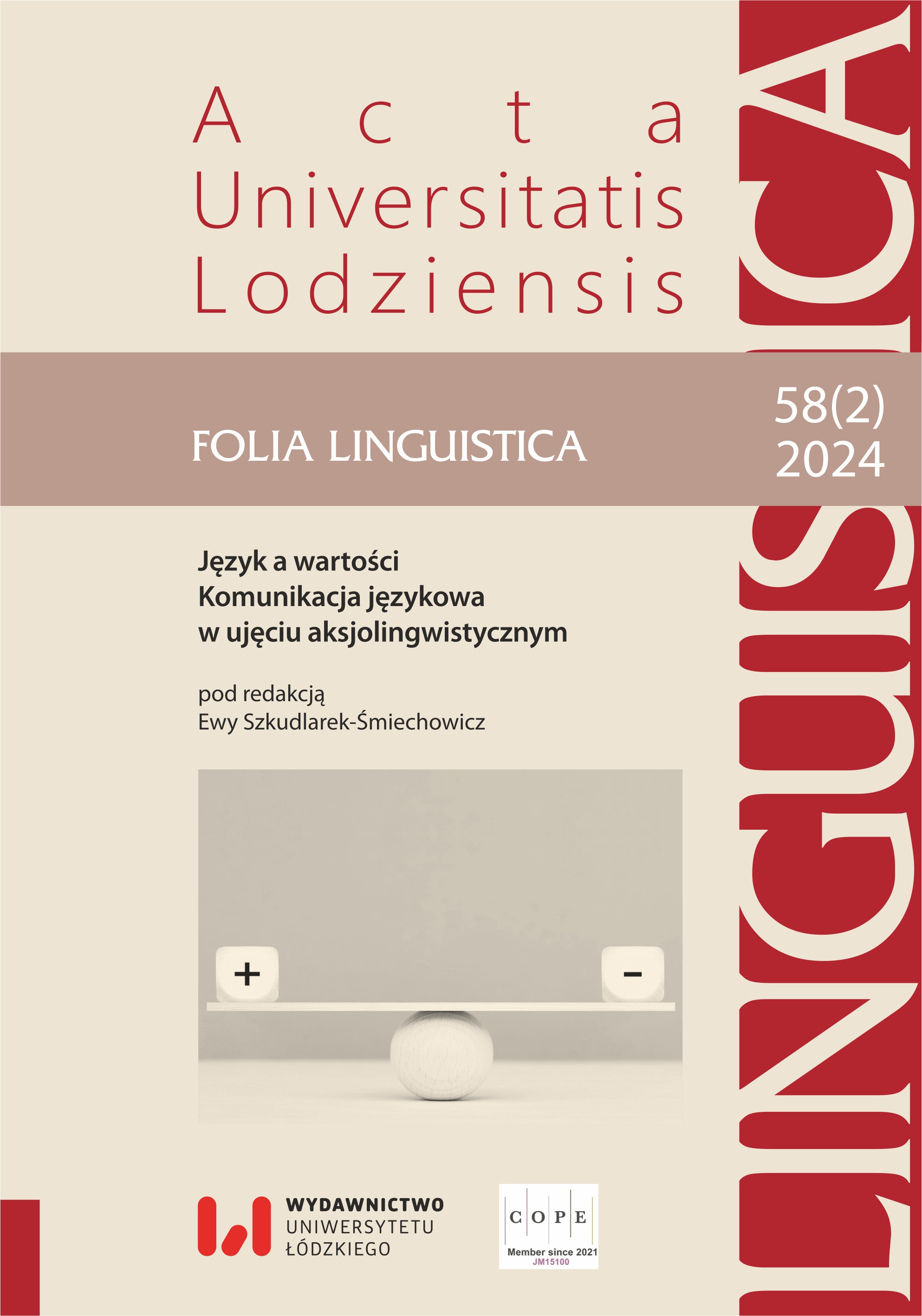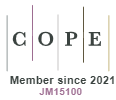A characterization of valuations of Esperanto — an emic perspective
DOI:
https://doi.org/10.18778/0208-6077.58.2.34Keywords:
Esperanto, identity, ideology, lingua franca, minority language, valuesAbstract
The paper presents an overview of sociolinguistic research along with an ethnolinguistic analysis of three types of data: corpora, press discourse and biographical interviews in order to show the values attributed to Esperanto by its users. The international planned language Esperanto has gathered around itself a thriving community in which it plays a role in integration and identity construal in addition to its primary function as an auxiliary language. The analyses carried out confirm that people involved in the Esperanto movement and using the language on a daily basis associate with it a complex system of values, with Esperanto itself as its centre, both as a language of equality, designed for international communication, and as a diasporic minority language, which it is in the mind of its users.
Downloads
References
Alòs i Font H., 2012, Catalan Esperantists: Pacifists in a globalised world, „ICIP Working Papers”, nr 3, s. 1–64.
Google Scholar
Bartmiński J., Pazio-Wlazłowska D., Żywicka B., 2022, Leksykon aksjologiczny Słowian i ich sąsiadów — stan obecny i perspektywy kontynuacji, w: S. Niebrzegowska-Bartmińska, J. Szadura, B. Żywicka (red.), Nazwy wartości i koncepty kulturowe. Hierarchie i rekonstrukcje, Lublin: Wydawnictwo Uniwersytetu Marii Curie-Skłodowskiej, s. 9–17.
Google Scholar
Blanke D., 2001, Vom Entwurf zur Sprache, w: K. Schubert (red.), Planned languages: from concept to reality, Brussel: Hogeschool voor Wetenschap en Kunst, s. 37–89.
Google Scholar
Bourdieu P., 1991, Language and symbolic power, Cambridge: Polity Press.
Google Scholar
Caligaris I., 2016, Una lingua per tutti, una lingua di nessun paese: una ricerca sul campo sulle identità esperantiste, Ariccia: Aracne Editrice.
Google Scholar
Cramer M., 2021, Empirical study on the use of gender-neutral pronouns in Esperanto, w: I. Koutny, I. Stria, M. Farris (red.), Interkultura rolo de Esperanto / Intercultural role of Esperanto / Międzykulturowa rola esperanta, Poznań: Rys, s. 201–218. https://doi.org/10.48226/978-83-66666-31-3
Google Scholar
Farris M., 2017, Esperanto and the Market State, „Język. Komunikacja. Informacja”, t. 12, s. 113–120. https://doi.org/10.14746/jki.2017.12.8
Google Scholar
DOI: https://doi.org/10.14746/jki.2017.12.8
Fians G., 2021, Lingvo kiel ĉies propraĵo, ŝanĝo kiel ĉies rajto: Vortelekto, lingva aŭtoritato kaj normigado en Esperanto, w: I. Koutny, I. Stria, M. Farris (red.), Interkultura rolo de Esperanto / Intercultural role of Esperanto / Międzykulturowa rola esperanta, Poznań: Rys, s. 175–188. https://doi.org/10.48226/978-83-66666-31-3
Google Scholar
Fiedler S., 2002, On the main characteristics of Esperanto communication, w: K. Knapp, C. Meierkord (red.), Lingua Franca Communication, Frankfurt am Main: Peter Lang, s. 53–86.
Google Scholar
Fiedler S., 2012, The Esperanto denaskulo: The status of the native speaker of Esperanto within and beyond the planned language community, „Language Problems & Language Planning”, t. 36, nr 1, s. 69–84. https://doi.org/10.1075/lplp.36.1.04fie
Google Scholar
DOI: https://doi.org/10.1075/lplp.36.1.04fie
Fiedler S., Brosch C.R., 2022, Esperanto — Lingua Franca and Language Community, Amsterdam: John Benjamins, http://www.jbe-platform.com/content/books/9789027257536 (dostęp: 15.03.2024). https://doi.org/10.1075/wlp.10
Google Scholar
DOI: https://doi.org/10.1075/wlp.10
Galor Z., Pietiläinen J., 2015, UEA en konscio de esperantistoj, Dobrichovice (Praha): Kava-Pech.
Google Scholar
Gobbo F., Miola E., 2016, Modificare l’immagine linguistica: Esperanto e Piemontese a confronto, w: G. Agresti, J.-G. Turi (red.), Représentations sociales des langues et politiques linguistiques, Roma: Aracne Editrice, s. 287–304.
Google Scholar
Kimura G.C., 2012, Esperanto and minority languages: A sociolinguistic comparison, „Language Problems & Language Planning”, t. 36, nr 2, s. 167–181. https://doi.org/10.1075/lplp.36.2.05kim
Google Scholar
DOI: https://doi.org/10.1075/lplp.36.2.05kim
Koutny I., 2015a, Can Complexity be Planned?, „Interdisciplinary Description of Complex Systems”, t. 13, nr 2, s. 236–249. https://doi.org/10.7906/indecs.13.2.4
Google Scholar
DOI: https://doi.org/10.7906/indecs.13.2.4
Koutny I., 2015b, A typological description of Esperanto as a natural language, „Język. Komunikacja. Informacja”, t. 10, s. 43–62.
Google Scholar
Krägeloh C., Neha T.N., 2014, Lexical expansion and terminological planning in indigenous and planned languages, „Language Problems & Language Planning”, t. 38, nr 1, s. 59–86. https://doi.org/10.1075/lplp.38.1.04kra
Google Scholar
DOI: https://doi.org/10.1075/lplp.38.1.04kra
Pietiläinen J., 2010, Plurlingvismo kaj Esperanto: Ideologia ŝanĝiĝo en la Esperanto-movado, w: D. Blanke, U. Lins (red.), La arto labori kune: festlibro por Humphrey Tonkin, Rotterdam: Universala Esperanto-Asocio, s. 781–792.
Google Scholar
PIV — Plena Ilustrita Vortaro de Esperanto, 2020, http://vortaro.net (dostęp: 28.03.2024).
Google Scholar
Schreyer C., 2015, The digital fandom of Na’vi speakers, „Transformative Works and Cultures”, t. 18. https://journal.transformativeworks.org/index.php/twc/article/view/610 (dostęp: 26.01.2024). https://doi.org/10.3983/twc.2015.0610
Google Scholar
DOI: https://doi.org/10.3983/twc.2015.0610
Stria, I., 2015, Esperanto speakers — an unclassifiable community?, w: W. Malec, M. Rusinek, A. Sadowska (red.), Challenging Ideas and Innovative Approaches in Applied Linguistics, Lublin: Wydawnictwo KUL, s. 175–189.
Google Scholar
Stria I., 2017a, Language attitudes among Esperanto speakers, „Język. Komunikacja. Informacja”, t. 12, s. 146–158. https://doi.org/10.14746/jki.2017.12.11
Google Scholar
DOI: https://doi.org/10.14746/jki.2017.12.11
Stria I., 2017b, Haben Esperanto-Sprecher ein gemeinsames Weltbild? Zu den Ergebnissen einer Fragebogenstudie, w: C. Brosch, S. Fiedler (red.), Jahrbuch der Gesellschaft für Interlinguistik 2017, Leipzig: Leipziger Universitätsverlag, s. 103–110.
Google Scholar
Stria I., 2021, Legitimacy in a multilingual community: how identity studies can benefit from experiences of the Esperanto community, w: I. Koutny, I. Stria, M. Farris (red.), Interkultura rolo de Esperanto / Intercultural role of Esperanto / Międzykulturowa rola esperanta, Poznań: Rys, s. 147–157. https://doi.org/10.48226/978-83-66666-31-3
Google Scholar
Stria I., 2022a, Tożsamość w języku esperanto a językowy obraz świata pojęć SPRAWIEDLIWOŚĆ, RÓWNOŚĆ oraz TOLERANCJA, w: S. Niebrzegowska-Bartmińska, M. Nowosad-Bakalarczyk, P. Łozowski (red.), I Międzynarodowy Kongres Etnolingwistyczny. Tom 3: Pamięć — tożsamość — kategorie językowo-kulturowe, Lublin: Wydawnictwo Uniwersytetu Marii Curie-Skłodowskiej, s. 81–93.
Google Scholar
Stria I., 2022b, Esperantlingva komunumo kaj ĝia identeco, w: I. Koutny (red.), Esperanta kulturo, Poznań: Rys, s. 125–136. https://doi.org/10.48226/978-83-67287-32-6
Google Scholar
Tonkin H., 2009, Where art and nature meet, w: E. Todeva, J. Cenoz (red.), The multiple realities of multilingualism: personal narratives and researchers’ perspectives, Berlin: Mouton de Gruyter, s. 191–208. https://doi.org/10.1515/9783110224481.191
Google Scholar
DOI: https://doi.org/10.1515/9783110224481.191
Tonkin H., 2015, Language Planning and Planned Languages: How Can Planned Languages Inform Language Planning?, „Interdisciplinary Description of Complex Systems”, t. 13, nr 2, s. 193–199. https://doi.org/10.7906/indecs.13.2.1
Google Scholar
DOI: https://doi.org/10.7906/indecs.13.2.1
Tonkin H., 2017, Esperanto: A Language Policy Assessment, „Język. Komunikacja. Informacja”, t. 12, s. 136–145. https://doi.org/10.14746/jki.2017.12.10
Google Scholar
DOI: https://doi.org/10.14746/jki.2017.12.10
Wood R.E., 1979, A Voluntary Non-Ethnic, Non-Territorial Speech Community, w: W.F. Mackey, J. Ornstein (red.), Sociolinguistic Studies in Language Contact, Berlin: De Gruyter Mouton, s. 433–450. https://doi.org/10.1515/9783110810752.433
Google Scholar
DOI: https://doi.org/10.1515/9783110810752.433
Downloads
Published
How to Cite
Issue
Section
License

This work is licensed under a Creative Commons Attribution-NonCommercial-NoDerivatives 4.0 International License.










